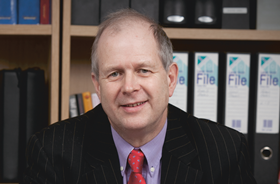
Hackney cabs are an iconic part of the cultural fabric of London. Sherlock Holmes and Watson were regular users, and cabs even appear in T.S. Eliot’s The Waste Land, where, at ‘the violet hour’, ‘the human engine waits/Like a taxi throbbing waiting’. Nevertheless, Transport for London (TfL) in its May 2020 Streetspace Plan and Guidance, decided not to exempt hackney carriages (taxis) in its proposals to reduce traffic on residential streets and create low-traffic neighbourhoods across London. Taxis were therefore to be ‘suppressed’ as part of ‘general traffic’. This would affect the right of taxis to ply for hire across London and to use bus lanes. Although the temporary schemes were to be reviewed by TfL, they ‘could become permanent’.
The claimants (trade bodies protecting and representing hackney carriage interests) consequently brought judicial review proceedings against TfL and the mayor of London in United Trade Action Group Limited and another v Transport for London and Mayor of London [2021] EWHC 72. On 20 January 2021 Mrs Justice Lang gave an 82-page judgment substantially in favour of the claimants. In the course of a painstaking cab ride through the tower blocks and leafy lanes of public law, Lang J gave a valuable refresher in key principles, including Wednesbury, Equality Act 2010 duties and legitimate expectation. Local authority governance lawyers will wish to consider these carefully.
The claimants submitted five grounds, including that in making and promulgating the Plan and Guidance the mayor and TfL:
1. Failed to have regard to relevant considerations, including the distinct status of taxis as a form of public transport, reflected in both law and policy, and the role played by taxis in facilitating accessible public transport for those with mobility impairments;
2. Failed to have proper regard to the public sector equality duty in section 149 of the Equality Act 2010;
3. Disproportionately interfered with the property rights of taxi owners and drivers in breach of Article 1 of Protocol 1 to the European Convention on Human Rights;
4. Breached the claimants’ legitimate expectation to use London roads and bus lanes;
5. Acted irrationally.
The claimants succeeded on all but ground 3 in respect of the Plan and Guidance. Ground 3 failed because the claimants had not filed evidence about a downturn in customers and income resulting specifically from the restrictions and therefore did not establish an interference with peaceful enjoyment of their possessions by control of use.
In considering ground 1, Lang J noted (following Lord Greene MR in Associated Provincial Picture Houses Ltd v Wednesbury Corporation [1948] 1 KB 223, at 229) the ‘well-established principle of public law that “a person entrusted with a discretion must… direct himself properly in law… must call his own attention to the matters which he is bound to consider… [and]… must exclude from his consideration matters which are irrelevant to what he has to consider”’. The judge said that ‘historically, buses and hackney carriages were the only vehicles authorised to ply for hire in London’ and the ‘position remains the same to this day’. However, the plan failed to recognise the ‘long-established status and role of taxis as a form of public transport, distinct from other cars, reflected both in law, and in the policies and mayoral statements’. These ‘considerations were clearly relevant, as the proposals would affect the right of taxis to ply for hire across London, and to use bus lanes’. In the circumstances, the mayor had acted unlawfully in making the plan and TfL did so in issuing the guidance.
As to the breach of section 149 of the Equality Act 2010, the court reviewed the measure and material case law (including Bracking v Secretary of State [2013] EWCA Civ 1345) and concluded that: ‘Prior to issuing the guidance, there was no investigation or consideration of the adverse impacts that restricting road use by taxis could cause to those with the relevant protected characteristics. Therefore TfL did not pay due regard to the equality duties in section 149(1) of the 2010 act.’
Legitimate expectation (effectively one branch of the public authority duty to act fairly) was canvassed in some depth by the court in considering whether the mayor and TfL had breached the claimants’ legitimate expectation to use London roads and bus lanes. The starting point was Lord Fraser’s finding in Council of Civil Service Unions v Minister for the Civil Service [1985] AC 374 that: ‘Legitimate… expectation may arise either from an express promise given on behalf of a public authority or from the existence of a regular practice which the claimant can reasonably expect to continue.’ And, as Laws LJ remarked in Nadarajah v Secretary of State for the Home Department [2005] EWCA Civ 1363: ‘The principle that good administration requires public authorities to be held to their promises would be undermined if the law did not insist that any failure or refusal to comply is objectively justified as a proportionate measure in the circumstances.’ In the circumstances, Lang J found that: ‘The policies in the Plan and the Guidance, which treat taxis in the same way as general traffic which is to be “suppressed”, and excluded from certain routes which will only remain open to buses, cycles and pedestrians, has led to a clear breach of the taxi drivers’ legitimate expectation in regard to the use of bus lanes.’ There was also no evidence ‘overriding public interest which justified the frustration of the taxi drivers’ legitimate expectation’.
Finally, on ground 5, Lang J concluded that the decision-making processes were ‘seriously flawed, and the decisions were not a rational response to the issues’ arising from Covid-19. But while Holmes and Watson will be pleased at the outcome, TfL is seeking to appeal.
Nicholas Dobson writes on local authority law and governance





























1 Reader's comment